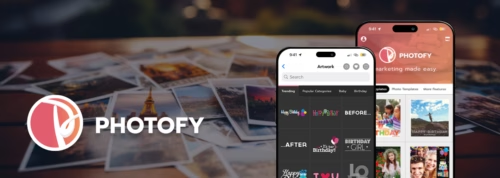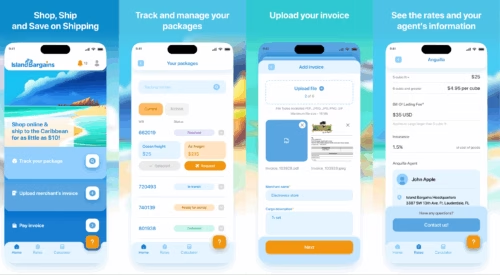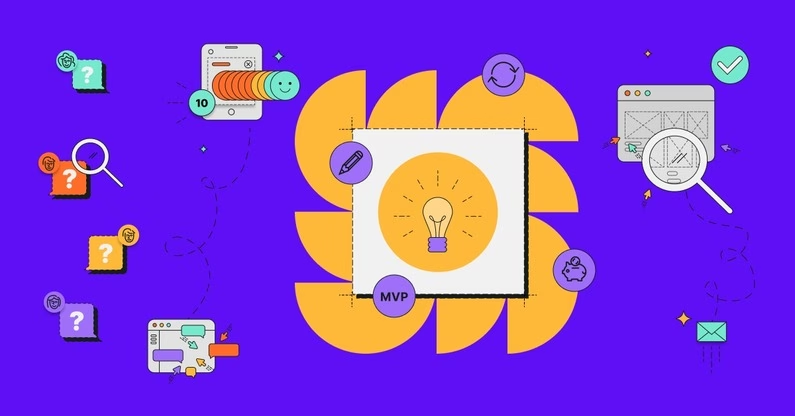
How to Build an MVP in 6 Steps That Investors Will Fund
Here's the cold, hard truth: According to a report by the Startup Genome Project, 90% of startups fail. 10% fail in the first year, and 70% do during years two to five. What's striking is that these numbers are true, regardless of your industry. And the biggest reason for failure? A product-market mismatch.
That's what a minimum viable product (MVP) is designed to address. And if you need a no-frills way to start building one now, here are six steps to follow.
If you're interested in how to build an MVP, this guide is for you. Here, we'll discuss what an MVP is, why it's beneficial, the different types you can launch, and how you can successfully deploy your MVP with DevTeam.Space so you can secure investment funding.
In this article:
- What is an MVP?
- Why Does Your Business Idea Need an MVP?
- Types of MVPs
- How to Build an MVP: 6 Key Steps to Follow
- Build Your MVP with DevTeam.Space
- FAQs on Building an MVP
What is an MVP?
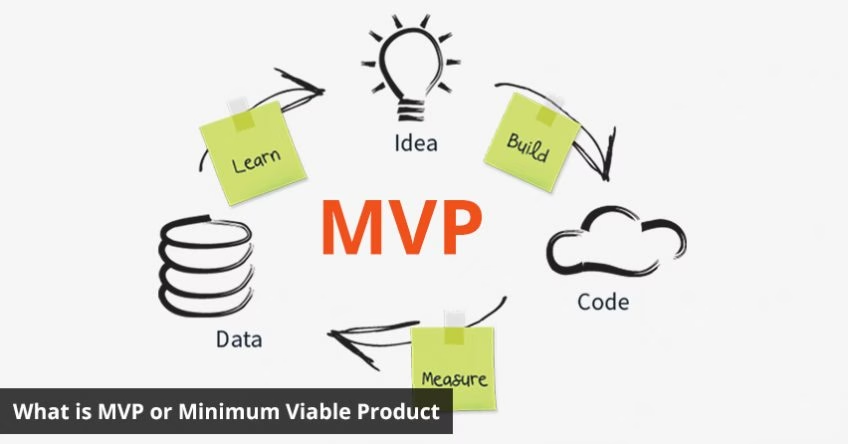
First introduced by Lean Startup visionary Eric Ries, a minimum viable product (MVP) is, in Ries' words, "the version of a new product which allows a team to collect the maximum amount of validated learning about customers with the least effort."
In simpler terms, it's the most basic version of a product that you can release to test a business hypothesis and gather user feedback.
That's what Airbnb founders Brian Chesky and Joe Gebbia launched in 2007.
Scrambling for a way to pay rent, the two assumed that in a city that frequently hosts conferences but has a constant shortage of hotel rooms, offering travelers a place to stay might help them earn money. So they rented an air mattress, created a website called Air Bed and Breakfast, and advertised their "accommodations".
It was straightforward and basic, but that simple way of testing a business idea did more than pay their rent. Today, Airbnb has a market valuation of nearly 80B dollars, according to current market data.
Why Does Your Business Idea Need an MVP?
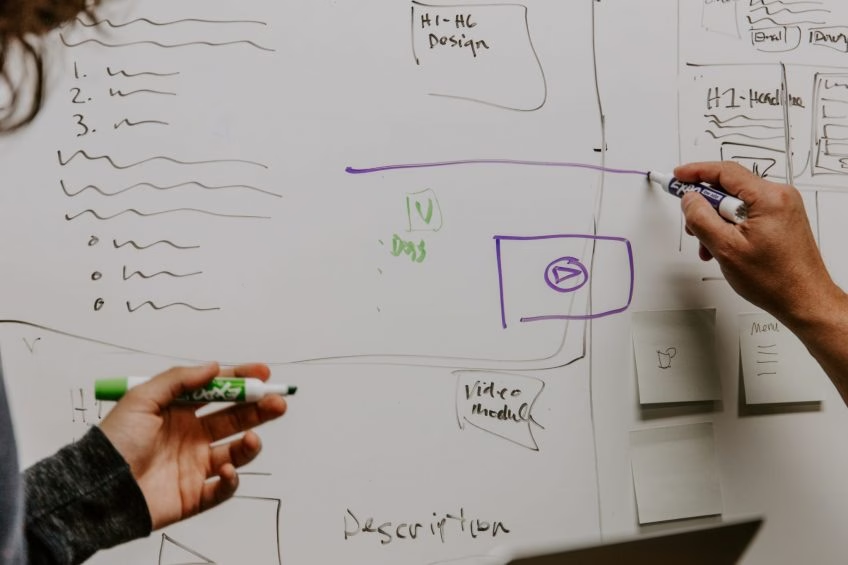
A business that wants to succeed needs all the knowledge it can access to make sure it doesn't only survive; it also thrives. Much like the resources we offer in our startup GPTs, an MVP provides you with the information you need to vet the viability and technical feasibility of your product.
Use up and down arrow keys to resize the meta box panel.PostBlock

Get a complimentary discovery call and a free ballpark estimate for your project
Trusted by 100x of startups and companies like
With the information you can gather, you can:
Collect User Feedback
Most business ideas go bust because people don't want them in the first place. But with a minimum viable product, you gain an inside look into what your target market thinks of your product or concept, which can answer important questions like:
- Is there an audience for your business idea?
- Does it solve a need?
- Can it be monetized (with ads, subscriptions, paid users, etc.)?
Accelerate Time-to-Market
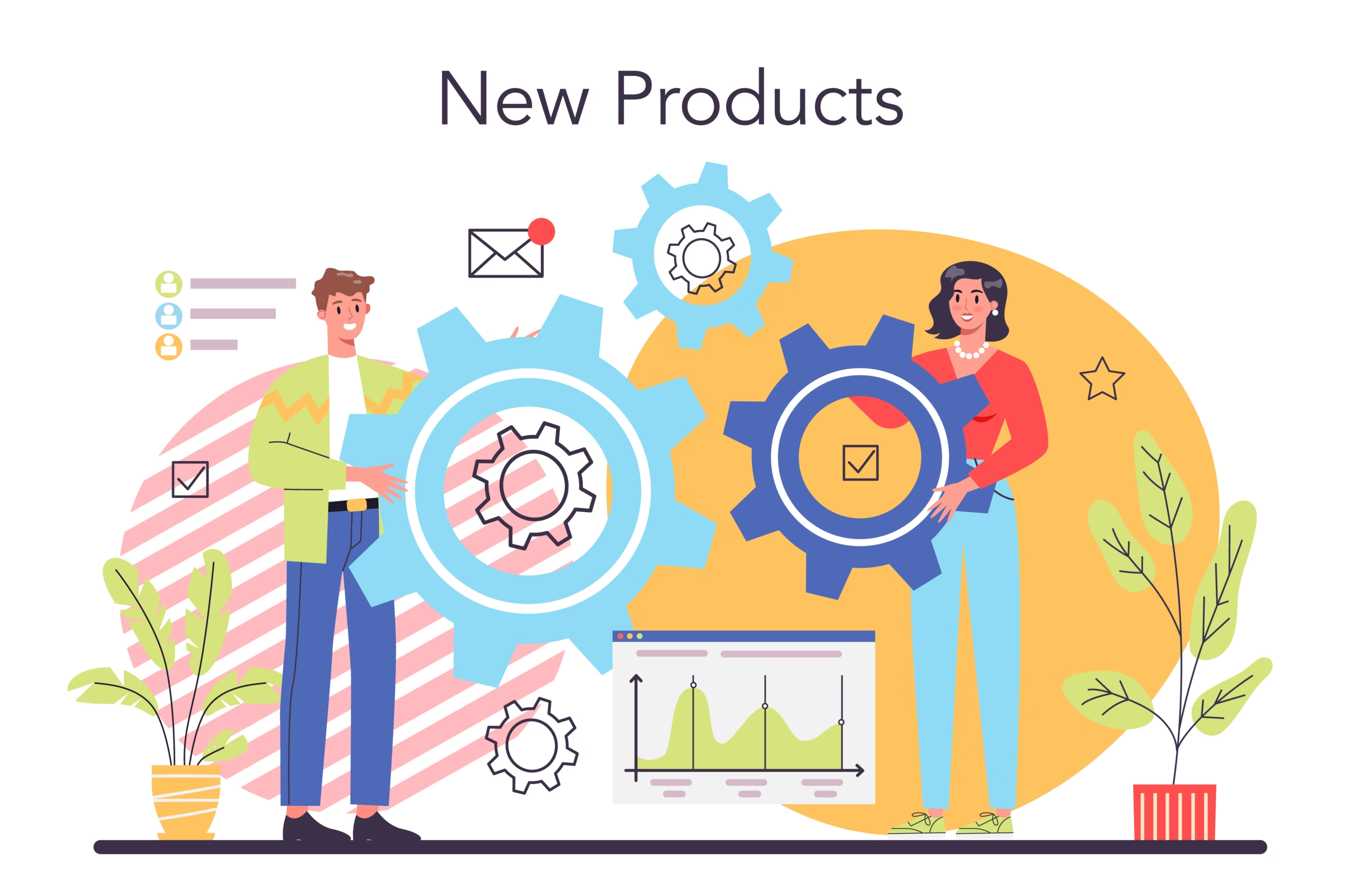
Image source: Freepik
According to McKinsey, most consumer goods reach the market within 13 months; for digital products like software development, the average time-to-market can take anywhere between a few months and a few years.
However, with an MVP, you can launch a simple but usable version of your product that incorporates its core functionality, without needing to wait for it to reach its feature-packed, full-fledged iteration.
That means your potential customers can start enjoying it or provide early feedback on how it can be improved.
Achieve Iterative Development
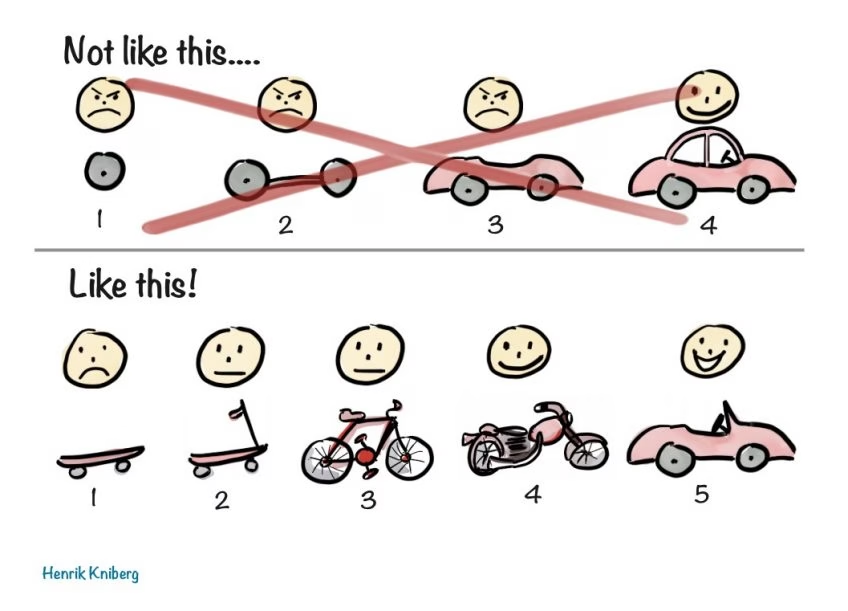
One of the best analogies for the use of MVPs is called the skateboard analogy, conceptualized by Henrik Kniberg. In his analogy, he likens the MVP development process to building a skateboard, which later evolves into a scooter, then a bicycle, then a motorcycle, and finally, a car.
In this iterative process, what the MVP (the skateboard) provides is a mode of transportation that gets the customer from point A to point B. Through customer feedback and continuous iteration, the specific channel used changes and grows until it reaches the final product in its most ideal form.
Ensure Cost Efficiency
Most businesses don't have a lot of funding to fall back on, which means you need to be as strategic as possible about how you spend the money you do have.
With a minimum viable product, you can focus on the main features that your idea needs to be functional, or the essential features that your target audience wants, so you don't need to burn your budget on building something that may not sell.
Mitigate Risks
An MVP also lessens the risks you take in business development by giving you insider info on what works or not, based on feedback from real users. And if you're looking to scale, your MVP will also help you safely test assumptions before you start implementing your plans and embark on full-scale development.
As such, you won't be wasting resources (both time and money) developing features that will ultimately be rejected.
Establish a User Base
One of the biggest rewards that comes from deploying an MVP is the ready market that it allows you to access. Asking beta testers to submit feedback, for instance, helps create a user base for your products, as well as a community that can encourage their wider adoption.
Attract Investors
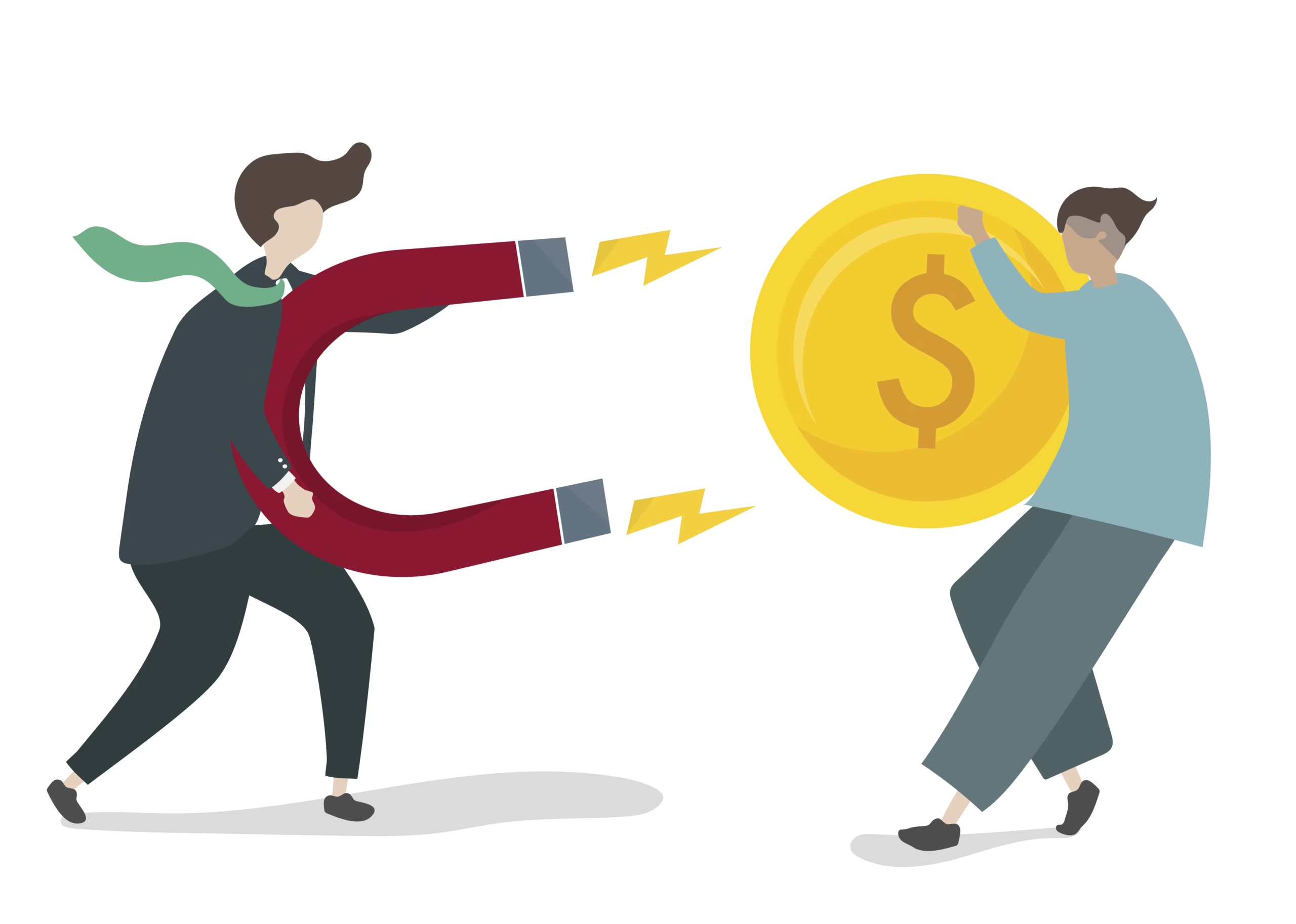
Image source: Freepik
Finally, a minimum viable product can attract early adopters and potential investors, encouraging them to support your business idea. This is important because, to investors, a great idea is hardly enough. Even if you pitch something truly revolutionary and stands apart from existing solutions, you need to be able to show, through data, that it is something that people want, need, and more importantly, will pay for.
An MVP will help you track, measure, and establish your core value proposition with market validation and win investors' confidence.
Types of MVPs
An minimum viable product exists in many forms, but the two most common categories are:
- Low-fidelity MVPs; and
- High-fidelity MVPs
Here's a breakdown of these two categories, as well as some real-world examples.
1. Low-fidelity MVPs
Low-fidelity MVPs are lightweight iterations that aim to answer the question, "Is anyone interested in this product?"
Here are the most common forms of low-fidelity MVPs.
A. Landing Page MVP
A landing page MVP is not designed to showcase a final product. Instead, it takes on the form of a simple webpage meant to explain what your product is about, or invite users to join a waitlist or sign up. With it, you can track clicks and conversions, which will help you establish demand.
Example: Before it launched, the social media scheduling tool Buffer deployed two iterations of landing page MVPs: the first to measure whether people wanted to use its service, and the second to evaluate whether they would be willing to pay for it.
When users sent their emails and clicked on its subscription plans, Buffer considered its business idea validated and started building the first version of its final product.
B. Email Campaign MVP
Can you launch an MVP without a lot of tech? Absolutely. With an email campaign MVP, all you need is a well-positioned email to encourage people to sign up. If they respond, you know you've got an innovative idea you can further develop.
Example: This was how Groupon started, with a WordPress blog selling T-shirts that could only be purchased by sending an email. Eventually, it snowballed into its more sophisticated version when demand started building, proving that, as a business model, validating a market demand does not need a lot of bells and whistles.
C. Marketing Campaign MVP
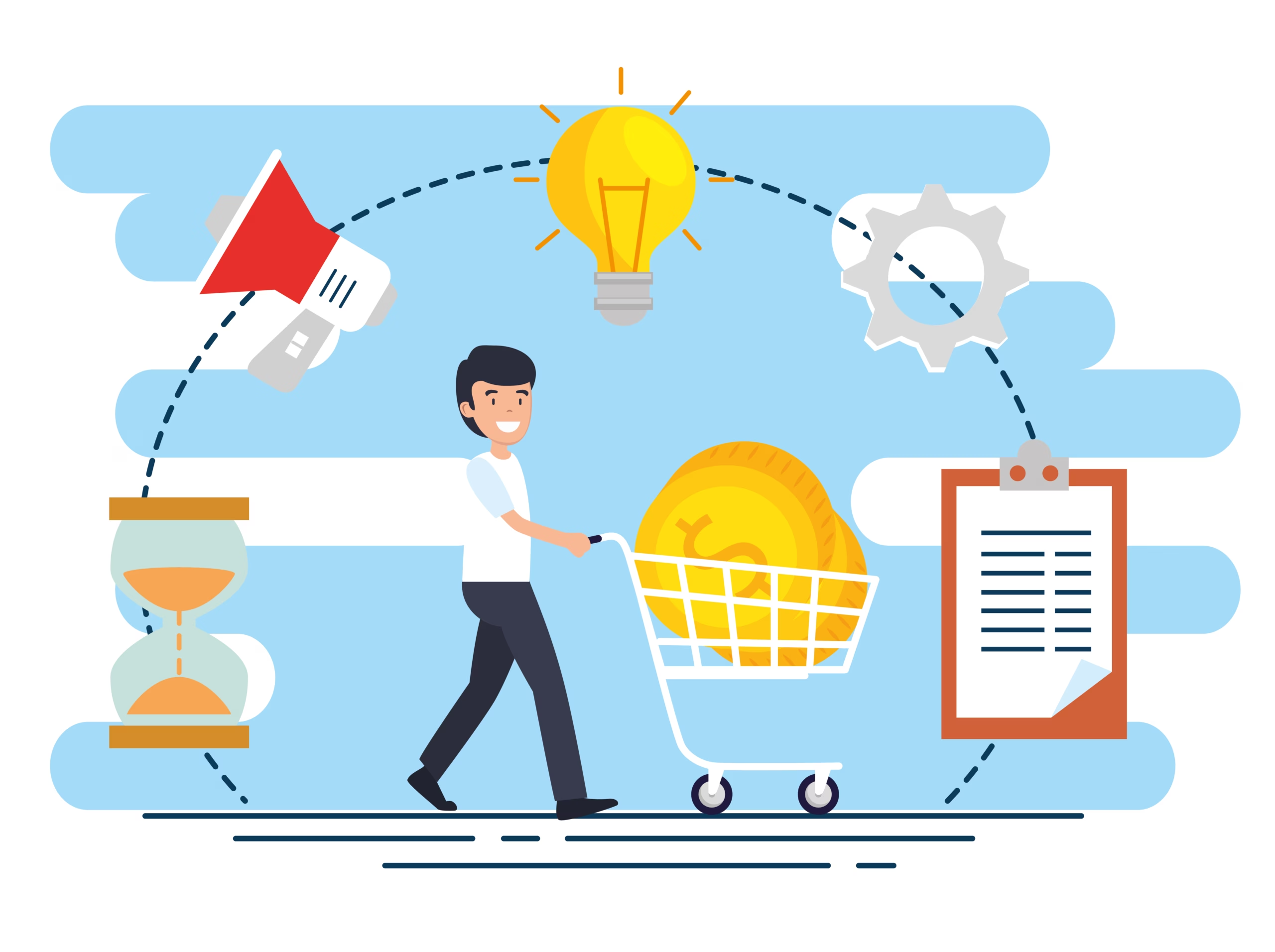
Image source: Freepik
You can also launch a marketing campaign to test your messaging and see how people respond. You can do this with a social media campaign, a paid ad, or, as in the previous example, a blog post.
Example: Dropbox famously used an explainer video to extoll the rewards of using its system and started one of the most game-changing pieces of technology to ever grace our gadgets. With a short demo, it effectively captured a pain point that was affecting a lot of people and promised to solve it with file syncing.
From there, sign-ups surged; people didn't even need actual access to the software to anticipate its benefits, which validated the product idea and allowed it to take off.
D. The Fake Door MVP
A "fake door" is an element that appears to exist but, in reality, does not. In MVP app development, this concept can be applied as an offering that, technically, doesn't even exist yet. It can be a feature that hasn't been designed yet, or a product that is yet to be constructed.
With a fake door MVP, you offer an option that you're just testing out. It gives people the illusion of the "door" being there, and when they "open" it, you know you have something worth building.
Example: In the previous example about Buffer, the "fake door" is the subscription model that the platform included in its landing pages. The pricing plans haven't been finalized yet, but the company could track the number of clicks that went into their CTA buttons.
1,200 top developers
us since 2016
To users, the fact that there were pricing options was of interest, and to Buffer, the fact that people were showing interest was enough of a starting point to actually develop the subscription options.
2. High-fidelity MVPs
High-fidelity MVPs can supplement low-fidelity MVPs. Once you know that there is interest, you can further test your core product with a high-fidelity MVP so you can answer the question: "Do people want to pay for this product?"
Here are some common forms of high-fidelity MVPs.
A. Single-Feature MVP
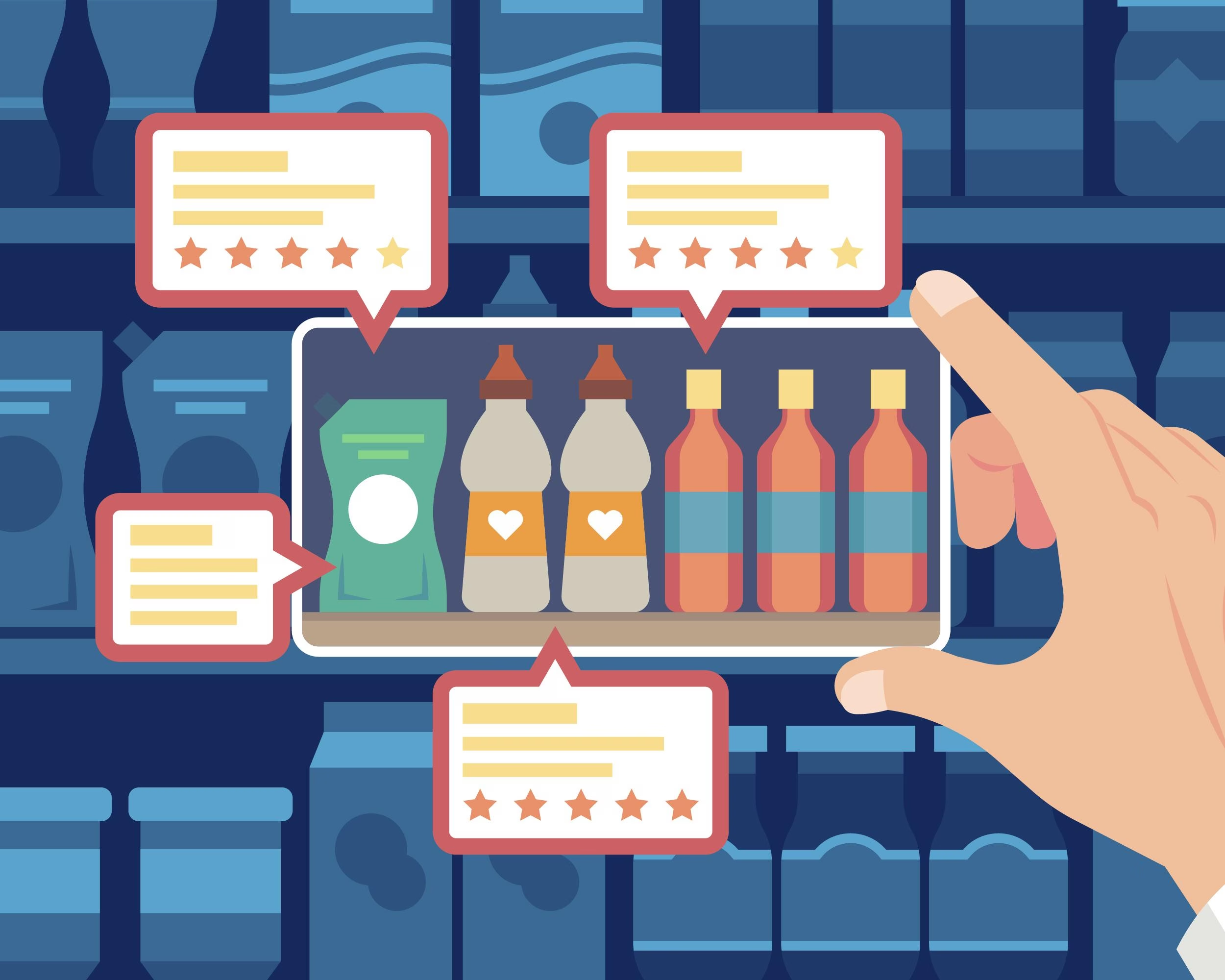
Image source: Freepik
A single-feature MVP strips your product down to just one core functionality to test if it gets traction. If it does, that's your window to collecting feedback and iterating until you develop a full-fledged product, software, or MVP app with all the features that it needs, guided by your market demands.
Example: Before Instagram (now a part of Meta) turned into an all-around social media app for individuals, content creators, and businesses, it was a photo-sharing platform whose main draw was its collection of filters. It also allowed early users to share their locations, but the thing that captivated people was the application of filters.
From there, the developers rolled out several updates periodically that catapulted what was once a way to share images into a fully developed ecosystem used by 2 billion active users monthly, as of latest figures.
B. Wizard of Oz MVP
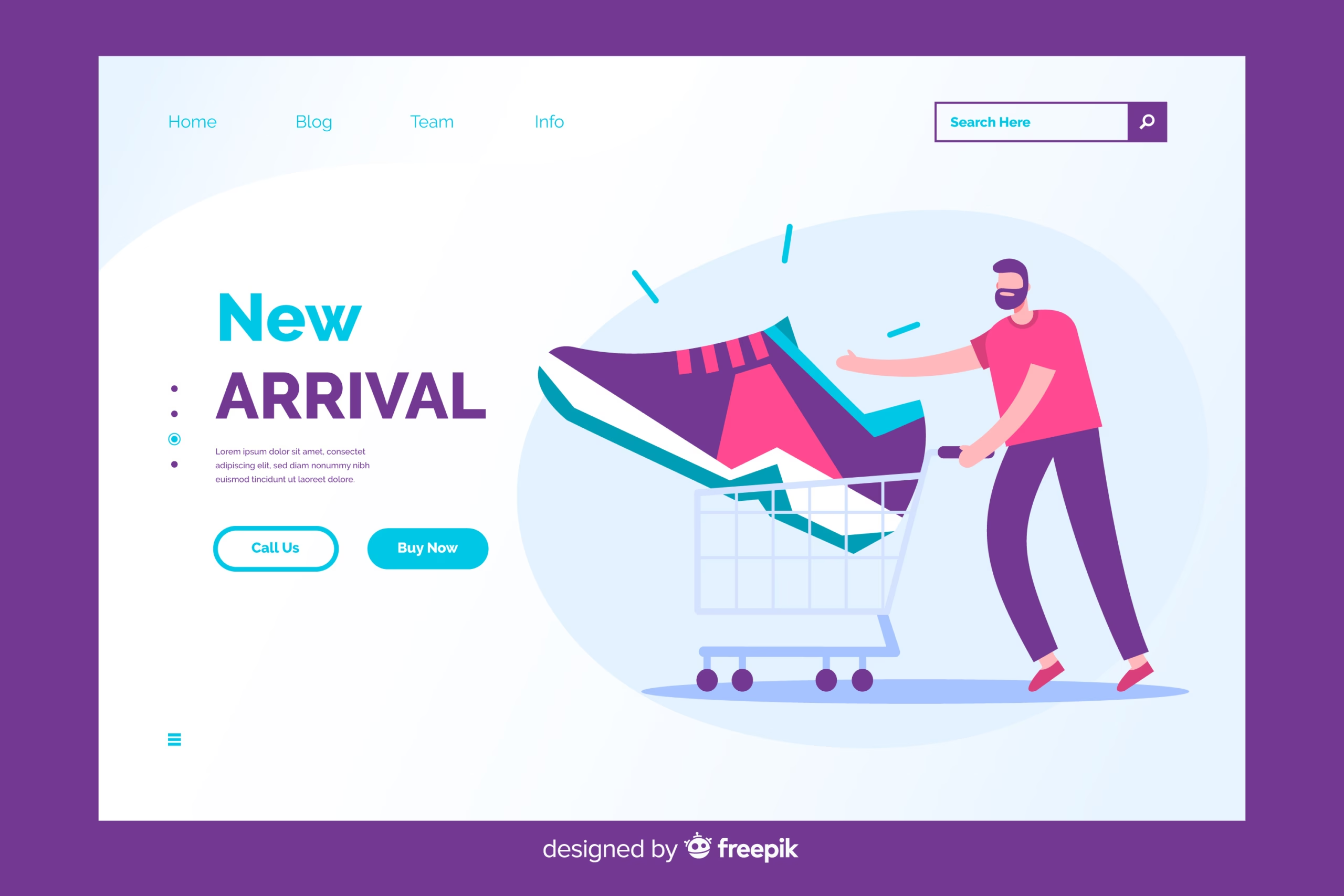
Image source: Freepik
A Wizard of Oz MVP creates the illusion that a product is fully automated, but, behind the scenes, it's operated manually by humans. With this kind of MVP, you are able to test user behavior without committing considerable resources to building expensive technology upfront.
Example: One famous application of this MVP comes from the early days of Zappos, when founder Nick Swinmurn posted photos of shoes online, creating the illusion that he was running a fully stocked online store. He would then buy and ship the shoes from local stores after customers placed an order.
His MVP proved that people were willing to buy shoes without trying them on, and that it's possible for a business to look and feel seamless even if there was a lot of manual effort behind its presentation.
C. Concierge MVP
A concierge MVP is similar to a Wizard of Oz MVP, except the business does not try to hide its manual effort. If you opt to use this in building your MVP, you commit to the work involved in manually offering your product or service and gathering the input from your engagements, which will inform your next phase of development.
Example: When they were first validating their product-market fit, Wealthfront manually offered personalized financial advice to interested clients, instead of going ahead and building a robo-advisor.
Upon confirming that there was a market for their service, they then transitioned to an automated business model with billions in assets under management, according to their report.
How to Build an MVP: 6 Key Steps to Follow
At this stage, you know enough about MVPs to actually attempt building one. Think of how many founders' journeys started right at this juncture, and how many successful MVP stories came out of this phase.
To make sure you're fully prepared, here's an MTV building template and a step-by-step iterative process you can follow.
Step 1: Define Your Target Audience
Estimated timeline: 1–2 weeks

At the very beginning of an MVP development is the need for clarity: Who are your target users, and what pain point are you solving?
At this step, you need to:
- Accurately define your problem statement. Example: "To solve their issues with invoicing, freelancers need invoice tools that are easy to use."
- Conduct market research to determine your target market, estimate your market size, and identify the existing solutions your product idea may need to challenge.
- Strategically map your competitive landscape to find the gaps that you can fill.
Once you have a clear idea of what problem you're solving and which users you're targeting, you can proceed to identify the important features you need for your offering.
Step 2: Identify Core Features
Estimated timeline: 1 week
At this point, you need to drill down to your core value proposition. Find the answers to questions like:
- Is your product cheaper, faster, easier, or more delightful than alternatives?
- What is your product idea’s unique selling point compared to the competitive landscape?
- What specific features does your product need in order to communicate its value?
When identifying your core features, keep your thought process as streamlined as possible. Focus on what will best position your product concept as a standalone offering without overbuilding. Center the minimal viable product version on how you can generate interest from real users, and anchor your MVP development process on their feedback.
Step 3: Build Fast and Smart from Design to Prototype
Estimated timeline: 4-8 weeks
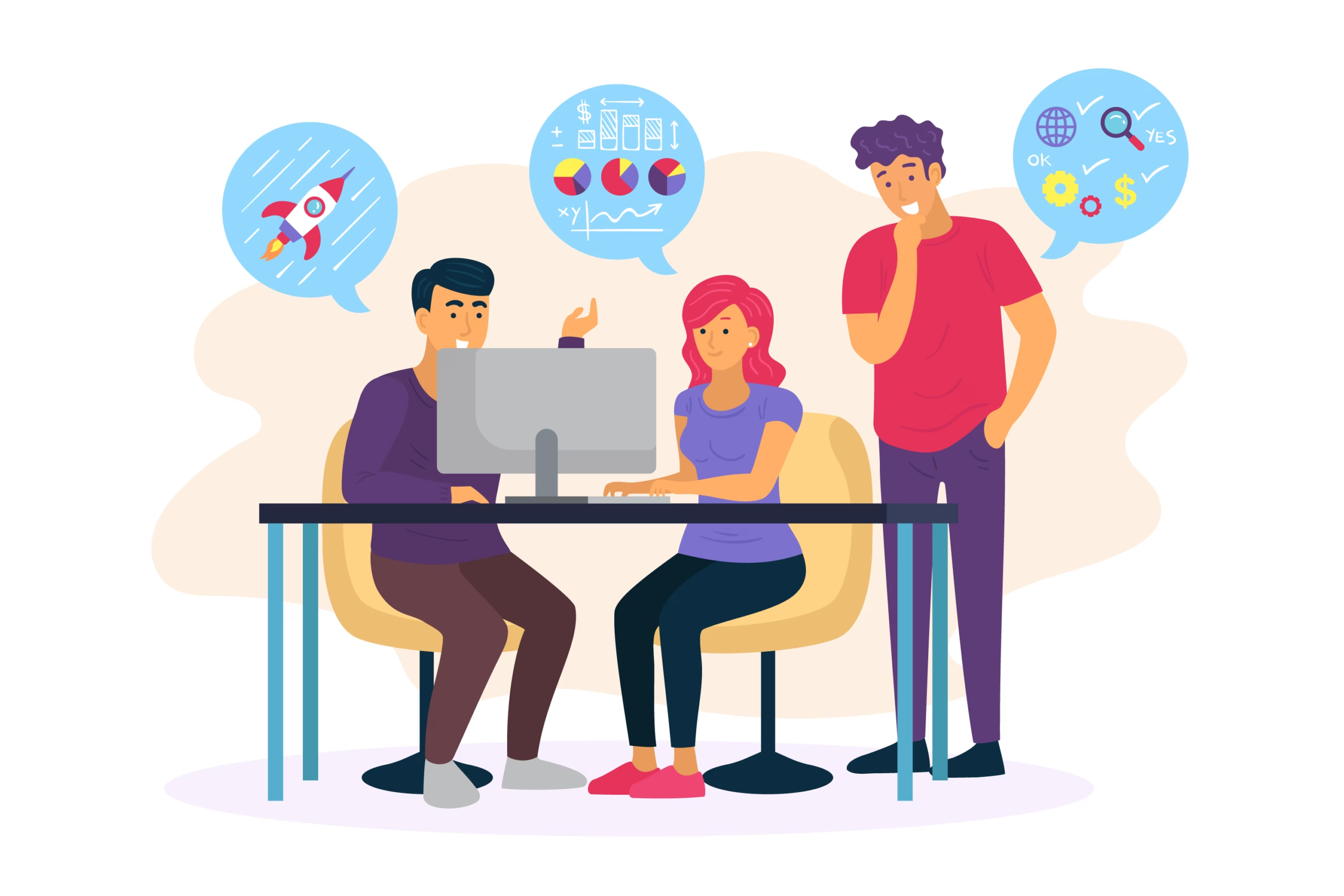
Image source: Freepik
Once you've identified your product's core features and unique value, it's time to transform the idea into its tangible form. But you won't be building it just yet. Instead, you need to create a solid foundation for the actual coding: something that you can test, pitch, and refine so it can be ready for the later stages.
This is what the design phase delivers.
At this stage, you're not just making pretty screens. You're dealing with the question, "Is my product desirable to users and feasible to build?" And to find the answer, the design phase should create these important deliverables:
- A user interface design, which encapsulates the user's journey from point to point and should result in a "final" interface that developers can code directly
- A technology stack outline, which defines the specific tools and solutions you're going to be using to build the product and should confirm that the product is buildable
- A detailed estimate and timeline, which breaks down the hours, costs, and roles involved in your MVP development, including team composition and post-launch costs such as ongoing developer support
- A technical prototype (if needed), which is a stripped-down working demo that proves that the technology is feasible
In some cases, you might need to work on deliverables 1-3, but if you have a specific idea that needs to be confirmed as working, then a technical prototype might be necessary.
For example, if your business idea is an app that consolidates disparate features into one user experience, then you probably won't need the prototype. But if you want to build an AI-powered product that colors hair in real time, then you need the demo.
Note: the technical prototype doesn't have to be perfect. Its main draw is in proving that your idea works in the real world.
What You Can Do with these Deliverables
You can use these deliverables from the design phase to:
- Establish a foundation for coding
- Test with early users (via clickable prototypes)
- Pitch your idea in presales or partnership meetings
- Secure early investor funding
Other Important Things to Know
Technical Team and Process
If you're a technical founder, you might be able to manage parts of this yourself. But unless you have specific experience in managing a full-stacked team and you've done it several times, you might struggle.
The best way to go about it is to partner with MVP development teams such as DevTeam.Space to help you launch fast and smart. Because while the design phase may sound complex, with a structure in place, it becomes easy.
With a professional development team, you get:
- A dedicated designer, tech lead, and project manager
- A structured workflow for transparency that includes weekly Zoom calls, daily communication over Slack or Teams, and shared access to Figma files to see the project's progress
Development Costs
In our experience managing 400+ projects, we found that the design phase usually costs between $5,000 and $50,000. Building the technical prototype, on the other hand, can fetch anywhere from $10,000 to $50,000.
Remember: the goal isn't to deploy the "perfect" iteration; it's to have a clickable prototype or technical prototype (or both) that you can put in front of real users and investors to see if it's something your market wants.
Step 4: Start User Testing
Estimated timeline: 2-4 weeks
Now it's time to put your clickable design prototype or technical prototype in the hands of users, partners, and investors to see how they interact with it and gauge their reactions.
Why do you need to test now? Because it is cheaper than coding first and failing later.
You can use the feedback you gather to:
- Abandon the project and go in another direction, if nobody's interested
- Refine and adapt the product, if you got mixed reactions
- Move forward with confidence, once your product secures traction
Step 5: Proceed to the Coding Phase
This is the stage where it's time to build your MVP for real. Once MVP development starts, your blueprint from stage 3 will finally turn into working code, which means the complexity can ramp up fast.
Who's Involved
During coding, you'll need more than a couple of developers, designers, and project leads. You will also benefit from having a business analyst, a DevOps engineer, and a QA engineer.
You need to be able to manage all of these people, which is where a professional development team can come in handy.
How It Works
Ideally, coding should follow weekly or biweekly agile sprints. You approve tasks, track progress in tools like Jira or Trello, and stay aligned with your team through daily updates.
During sprints, you can also start testing features on a dev server, and request for modifications or upgrades, as necessary.
With this system, you can easily see progress in real-time, adjust priorities to better manage your MVP, and make sure you're paying only for approved work.
The timeline for this step varies, from 4 weeks for simpler apps to more than a year for larger ERP systems. But by the end of coding, you'll have a live product that can help you leverage more funding and prepare for launch.
Step 6: Secure More Investor Interest
Estimated timeline: ongoing
At this point, your working product turns into your strongest pitch.
Here's how you can approach it to secure fresh capital to scale:
- Show traction: Share usage data, feedback from initial users, or pilot results.
- Highlight learning: Investors value proof that you’ve tested, iterated, and reduced risk, so provide specific examples.
- Present a roadmap: Describe how additional funding can help you do more, such as adding new features or creating marketing campaigns.
Build Your MVP with DevTeam.Space
Knowing how to build an MVP is only half the battle; the team you choose to build it with is also extremely important to its success.
Since 2016, DevTeam.Space has been trusted by more than 350 businesses to bring their visions to life. With our roster of vetted developers and development teams from Europe, we bring the expertise and experience you need to create your minimum viable product and start validating your business idea.
Engaging with us is easy! You only need to tell us about your project needs, vet the expert developers we will recommend, and get the ball rolling. Once you're happy with what we've built, you can scale easily, integrate feedback from your users, and secure funding for your idea.
The best part? This same process has raised more than 140M dollars for the early-stage startups that have worked with us.
Ready to be our next success story? Talk to our team today, and let's start building your MVP.
FAQs on Building an MVP
1. What does it mean to build an MVP?
A minimum viable product (MVP) is the simplest version of a product that you can release to validate or invalidate your business hypothesis. Usually, it includes only the core functionalities, or the set of essential features that deliver real value to early users, which will help test your concept.
2. How to build a good MVP?
To build a good MVP, you first need to clarify the problem and determine your target users. Conducting market research is also integral, as it will help you establish whether the pain point you're trying to solve exists and whether there is a real market that will benefit from it.
When building, prioritize essential features or the must-have functions that will best communicate your value proposition. Then release quickly, making sure to launch to real users and gather feedback. Use these insights to inform your next iteration.
3. How much should it cost to build an MVP?
Costs vary widely, but according to current benchmarks, they typically range between $50K to $250K.
There is no set price, but it depends mainly on the complexity of your project. The number of hours that need to be dedicated to MVP development work, for instance, will be dictated by how many tasks or features you want to incorporate. Similarly, design works will also incur their own timeline.
4. How long should it take to develop an MVP?
It varies, but the general guidance across startups suggests that lean MVPs take up to 10 weeks, while more developed MVPs can sometimes take up to 4 months. More complex MVPs will take longer.
The actual duration will depend on factors like the technical complexity of the features you want to include, the tech stack you wish to use, your team's expertise and resources, pre-development activities (like market research, etc.), testing, and iteration.
5. What is an MVP example?
A classic example of an MVP is Amazon (Jeff Bezos) selling only books to start; from there, the company was able to validate that there is a market for online goods, which provided a starting ground for the empire it has become.
6. What three things should you consider when creating an MVP?
Three crucial things to focus on when creating an MVP include:
- Problem-solution alignment: Does your MVP solve a pain point for your target market?
- Core features: What essential feature or features do you need to test your MVP's value without overbuilding?
- Validation capability: Can your MVP gather and measure feedback (sign-ups, user retention, NPS, etc.) to inform your next steps?

